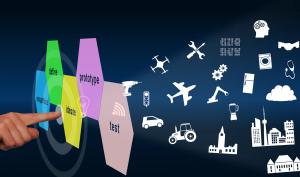Co-Authored by Walter Knitl and Nilufer Erdebil
The Internet of Things (IoT) has emerged as the new paradigm underpinning most of economic activity and social being. It extends the Internet to also connect physical objects with the people and computers already there.

To many, IoT means a network of sensors generating data about the physical world, and other devices that act on the data. While true, IoT is much broader than this simple siloed definition, and has far reaching effects and consequences beyond these physical endpoints. The massive volumes of generated data must be transmitted, stored, managed, interpreted and acted upon in ways that add value or benefit. Consequently, the IoT architecture also includes many different types of networks, cloud and data centers, analytics and control software, and human interactable applications.
Then, there is the questions of IoT value or benefit. That can only be answered within contexts of identifiable solutions where IoT is applied ñ such as autonomous vehicles, wearables, industrial automation, smart cities and many other. These verticals, which together constitute another important dimension of IoT, share architectural aspects and components, but also demand specialization – especially at the analytics and application level.
IoT applications and verticals deliver many benefits that include increased business productivity and better quality of life. However, IoT also presents societal challenges. For example, increased productivity often means reduced costs from reduced need for human work. And, better quality of life, which often depends on data representing personal attributes and behavior, is confounded by security, privacy and network autonomy concerns. Ultimately, these challenges will also spill over into legal and public policy domains.
IoT is an Innovation Driver
The Internet of Things has arisen from past innovations in packet communication, computing, algorithms, sensors and other fields of technology. While these current successes inspire even greater visions of new possibilities for quality of life and productivity, ongoing gaps and challenges exist in making possibilities into realities. For example – technological gaps such as better algorithms and device powering, or gaps in business organization and processes to achieve maximum returns from IoT. Then there are challenges such as privacy and security, or reduced employment and social agency that put pressure on public policy and law. As result, a new era of intentional innovation will be needed in many areas to deal with gaps and challenges posed by IoT.
Innovation moves faster with intention and effective methodologies. Design Thinking gives you an effective method for intentional innovation in all IoT dimensions.
Design Thinking
Design Thinking is all about how you can develop end user focused solutions to complex problems.
It starts out by looking at the end user’s needs, challenges, interests and only then identifying the real problem that needs to be solved. These are the first two of five phases of Design Thinking that include Empathize, Define, Ideate, Prototype, and Test.
The Empathize phase involves identifying your end users as well as getting to know what they’re thinking, saying, feeling, hearing and doing. These all help to get to the bottom of the real problem with current technologies, processes and products they’re using. The
Empathize phase needs to be done in person with end clients to be most impactful. After analyzing the input from end users and other gathered data, you can then start to Define what IoT related problem you will be solving.
The Ideate phase involves coming up with as many ideas as possible to solve the newly defined challenge. Best ideas are then selected to Prototype. The difference between Design Thinking prototyping and engineering or science prototyping and Testing is that in Design Thinking you are actually testing multiple prototypes and looking for more input from end users. This input will then be used to make the product, service, process or policy even better.
There are many examples of effective use of Design Thinking within and outside of the IoT space. For example, Design Thinking is used in the federal government of Canada to develop citizen centric services and policies ñ for instance in the regulatory space for displaying regulatory guidance, the team used design thinking to co-create with those that would be using the guidance. This produced results which were easier to use for regulatory guidance users.
So What
By applying Design Thinking to IoT, you can effectively implement intentional innovation to solve the gaps and challenges in IoT architecture, verticals and various related domains of endeavour. As an IoT products and services provider, Design Thinking will help you discover, innovate and deliver the right product and strengthen your return on investment. As a public policy maker, Design Thinking will help you faster discover and better understand IoT societal impacts, and deliver public policy to amplify benefits and mitigate risks of IoT.
By developing innovation capabilities in your organization through Design Thingking, you will bring out the best of IoT.
About Authors:
Walter Knitl – Principal at Praxiem, Chief Business Development Officer at IoT613
Walter is founder and consultant at Praxiem, empowering organizations to discover and deliver the right product to market, leveraging his extensive technology Product Management and Product Development experience. He is also cofounder at IoT613, enabling the IoT community to learn, interact and connect, including at the IoT613 Conference. Follow on Twitter: @praxiem @iot613
Nilufer Erdebil – CEO at Spring2 Innovation
Nilufer is an award winning Spring2Innovation founder and a leading innovation and design thinking consultant experienced in telecommunications, application development, project management & information technology management. Her firm focuses on strategy and vision development, design thinking, creating and managing innovation programs, and change management. Follow on Twitter: @spring2inno @digitalNil